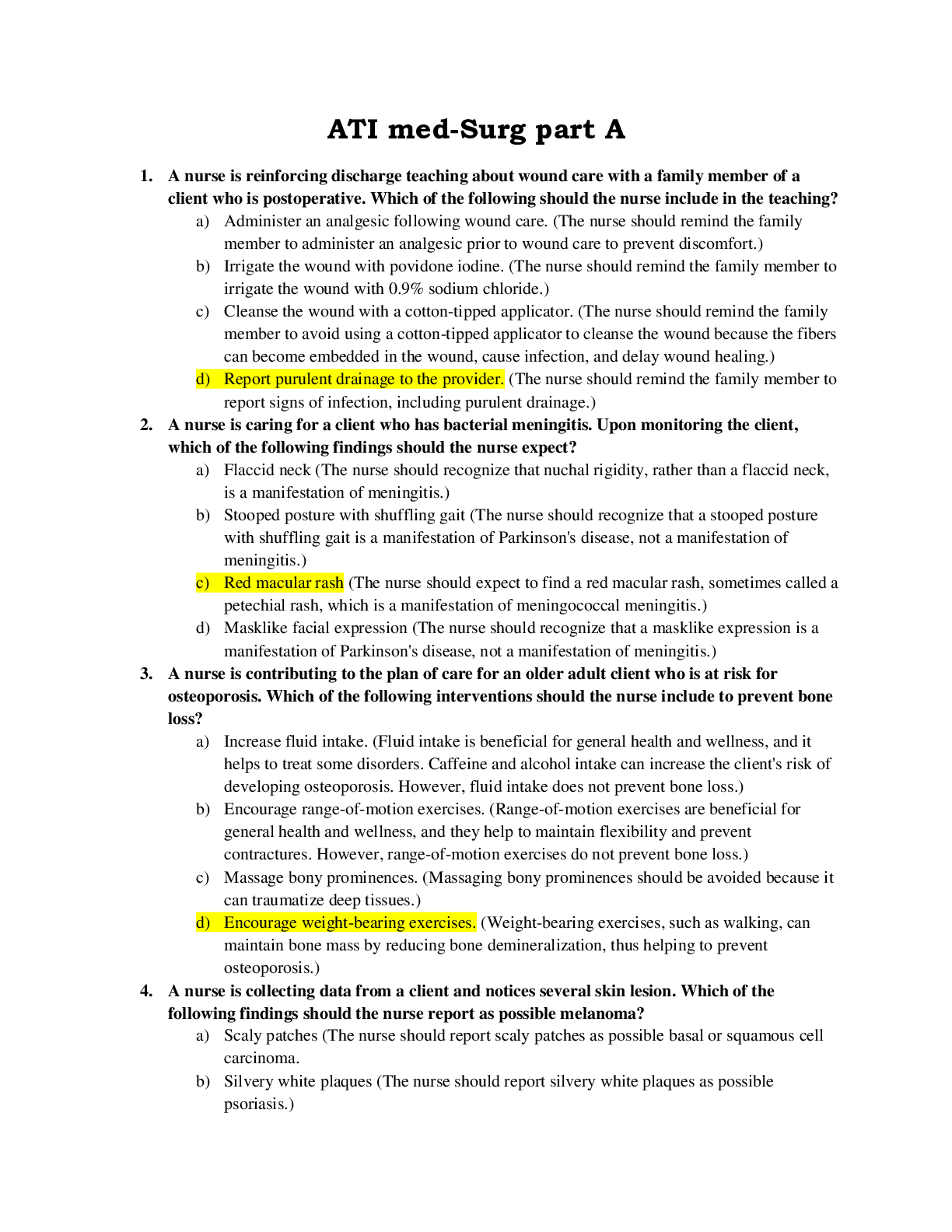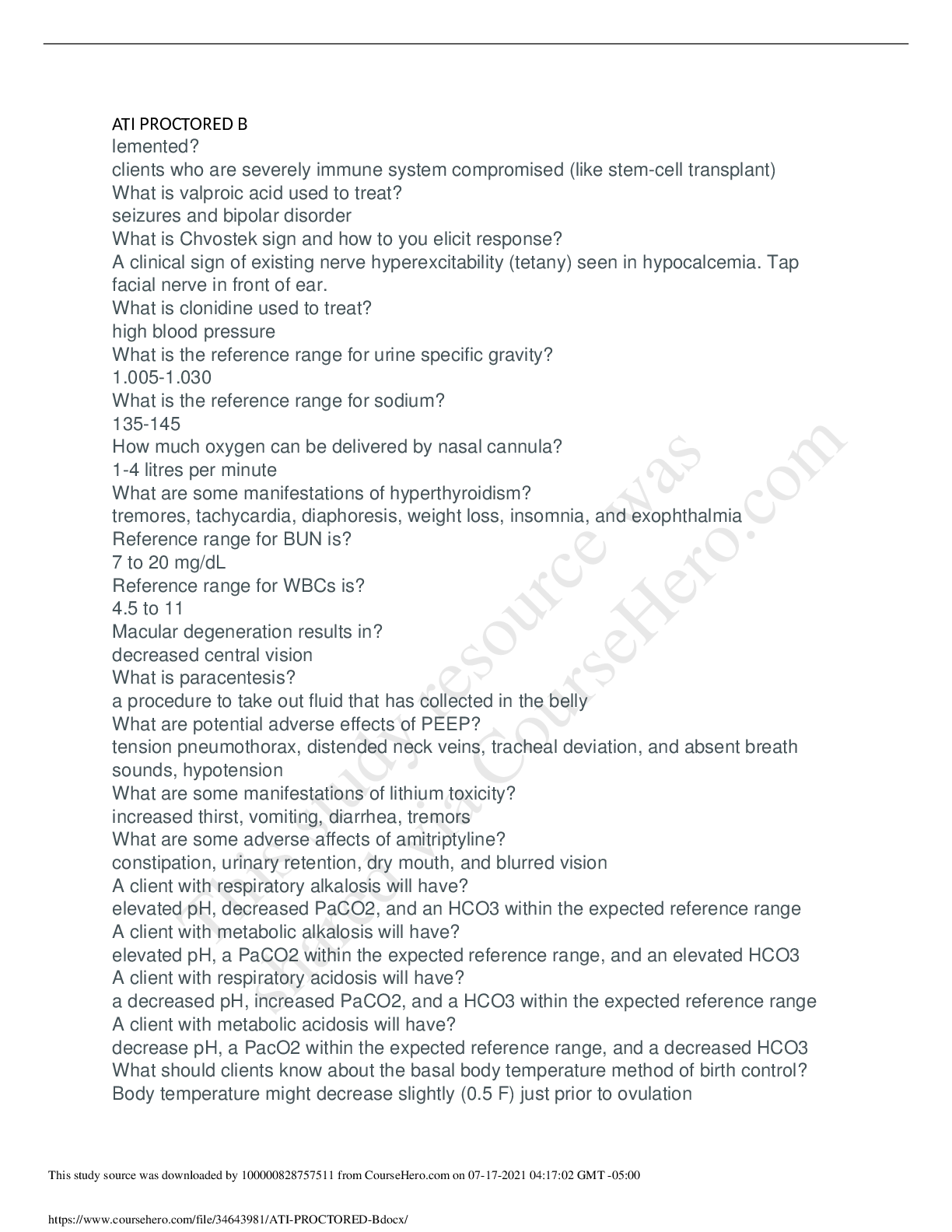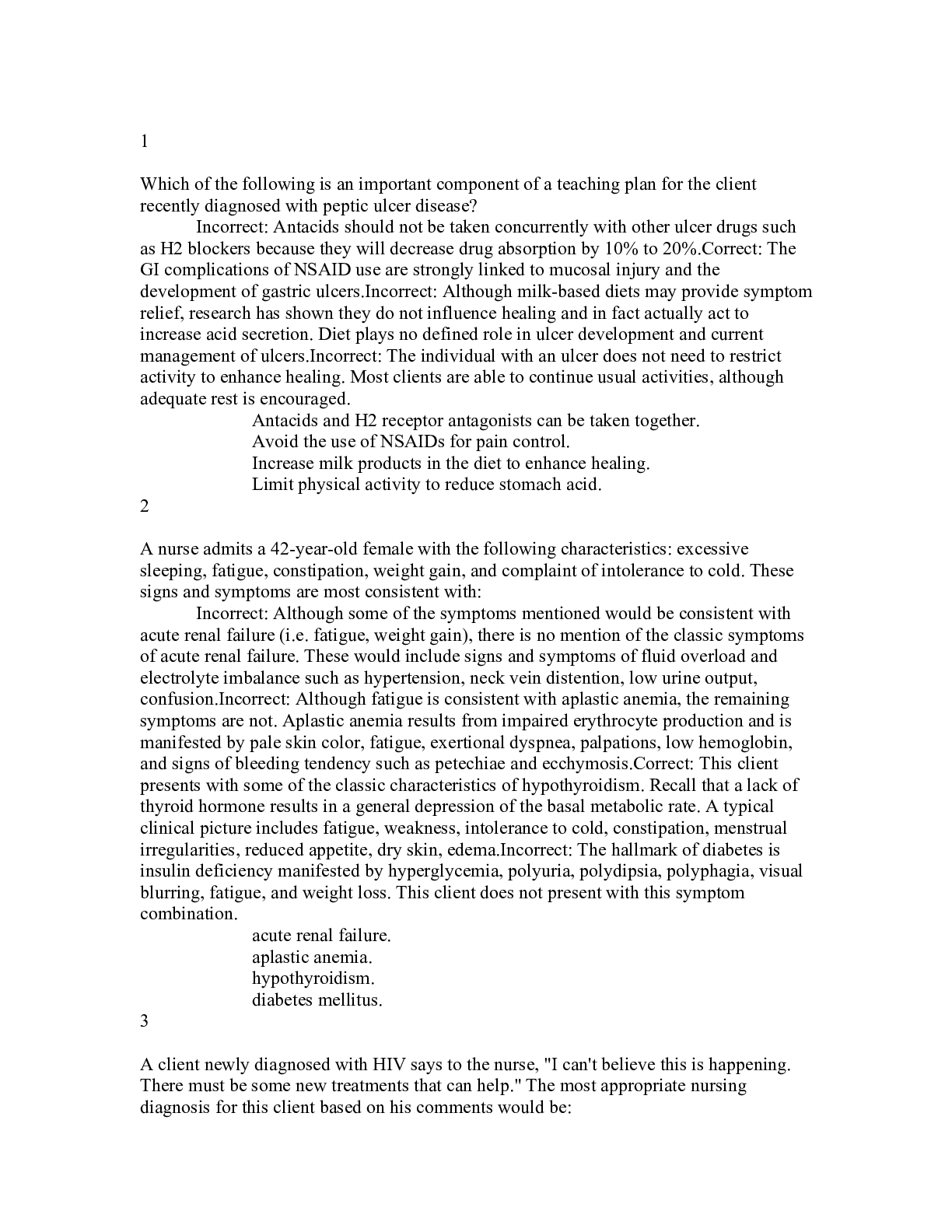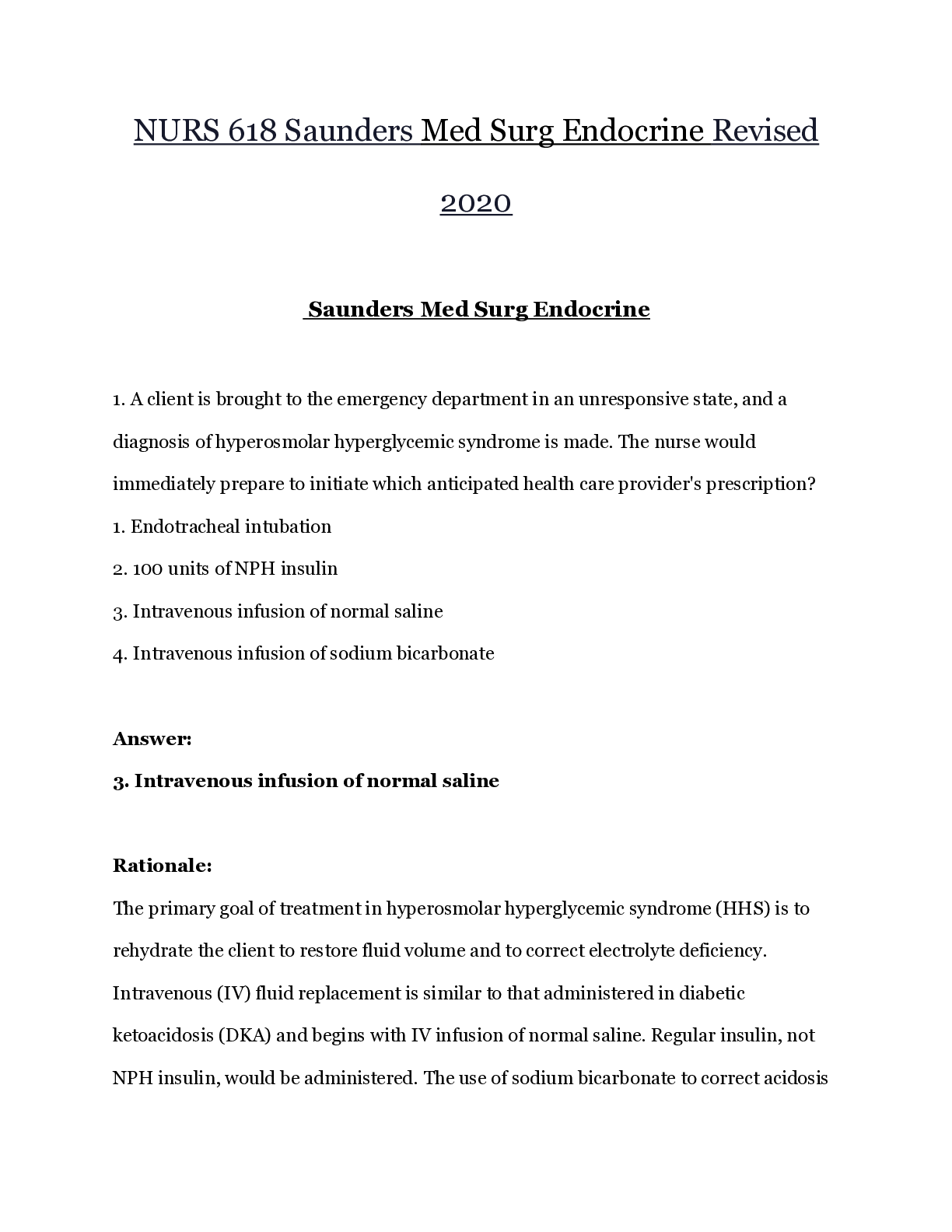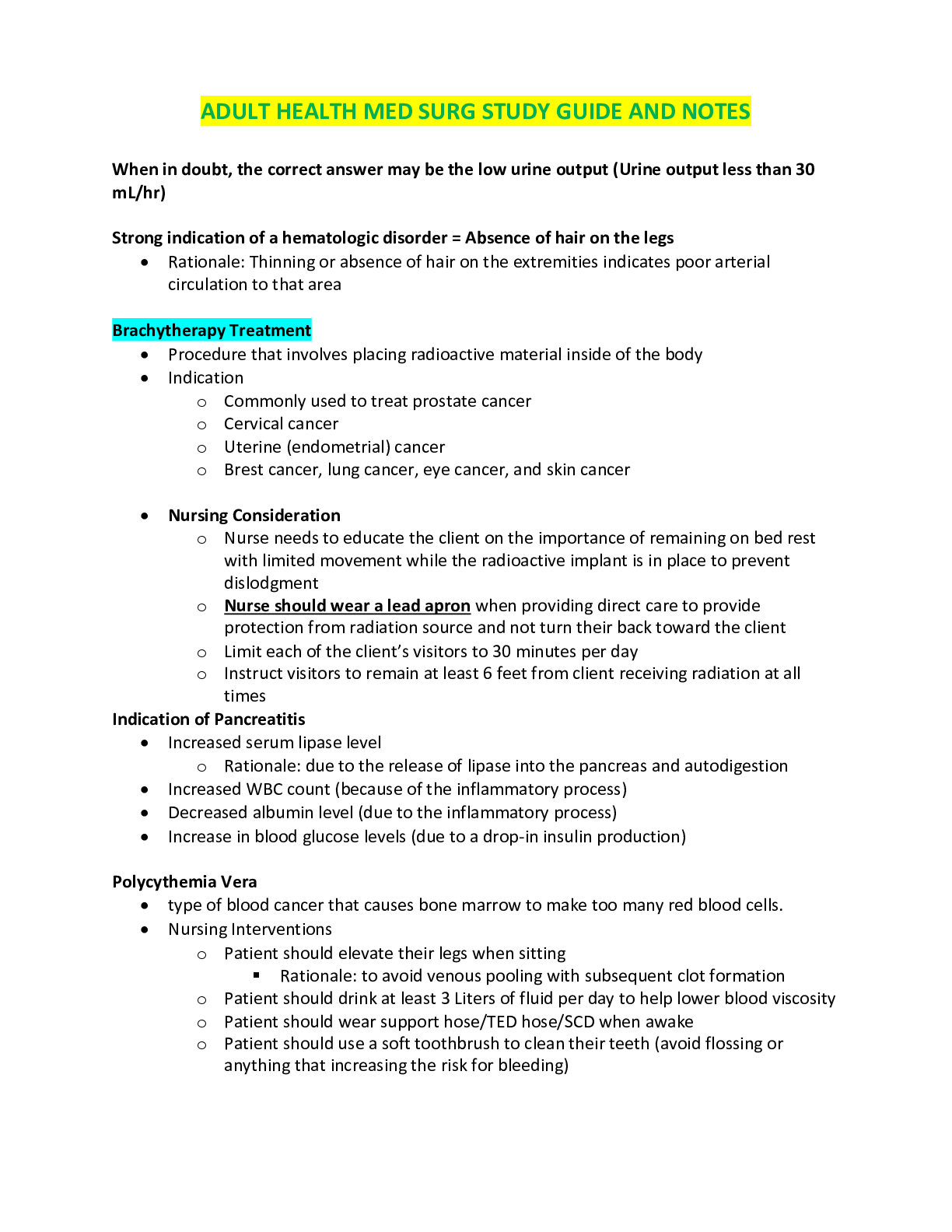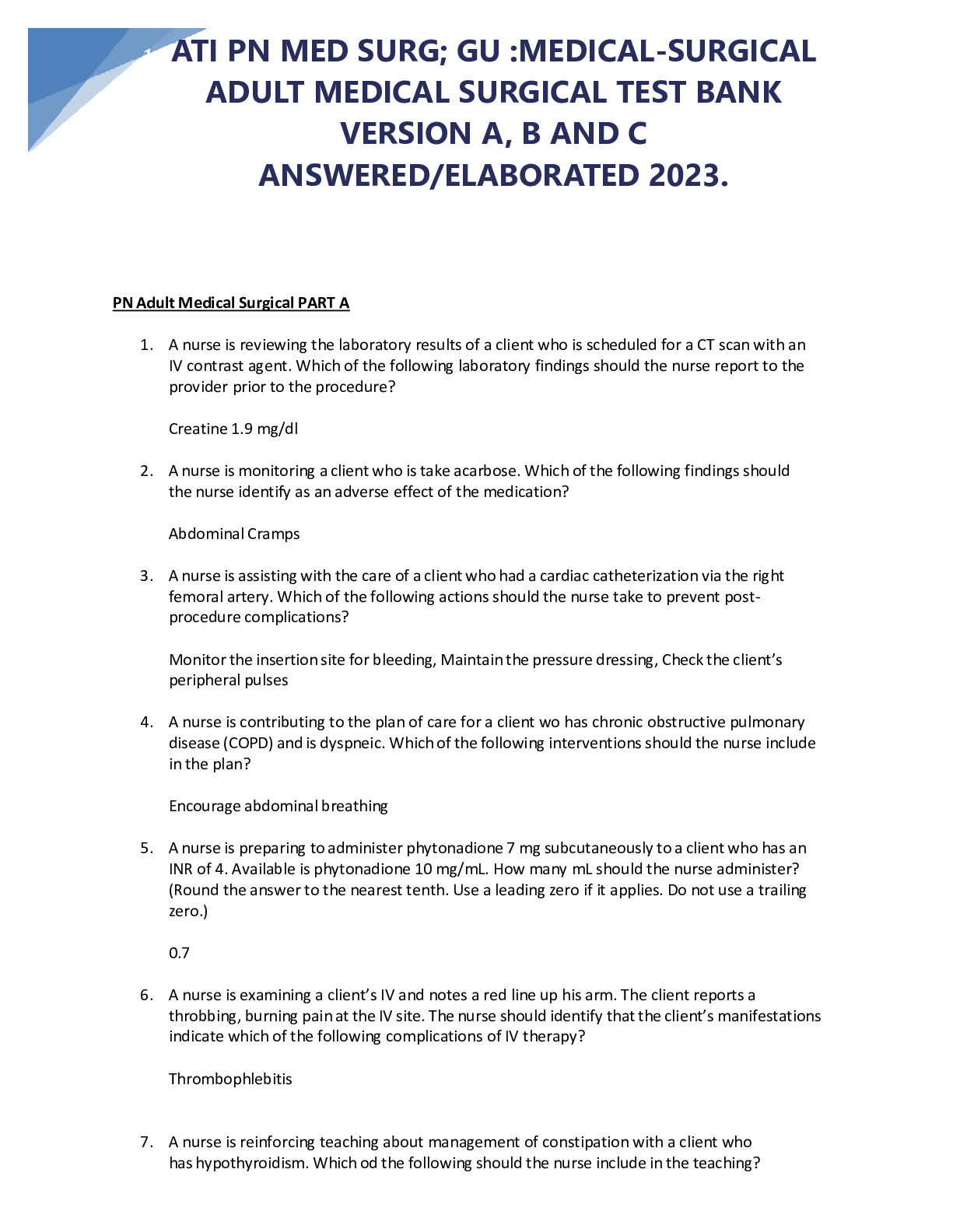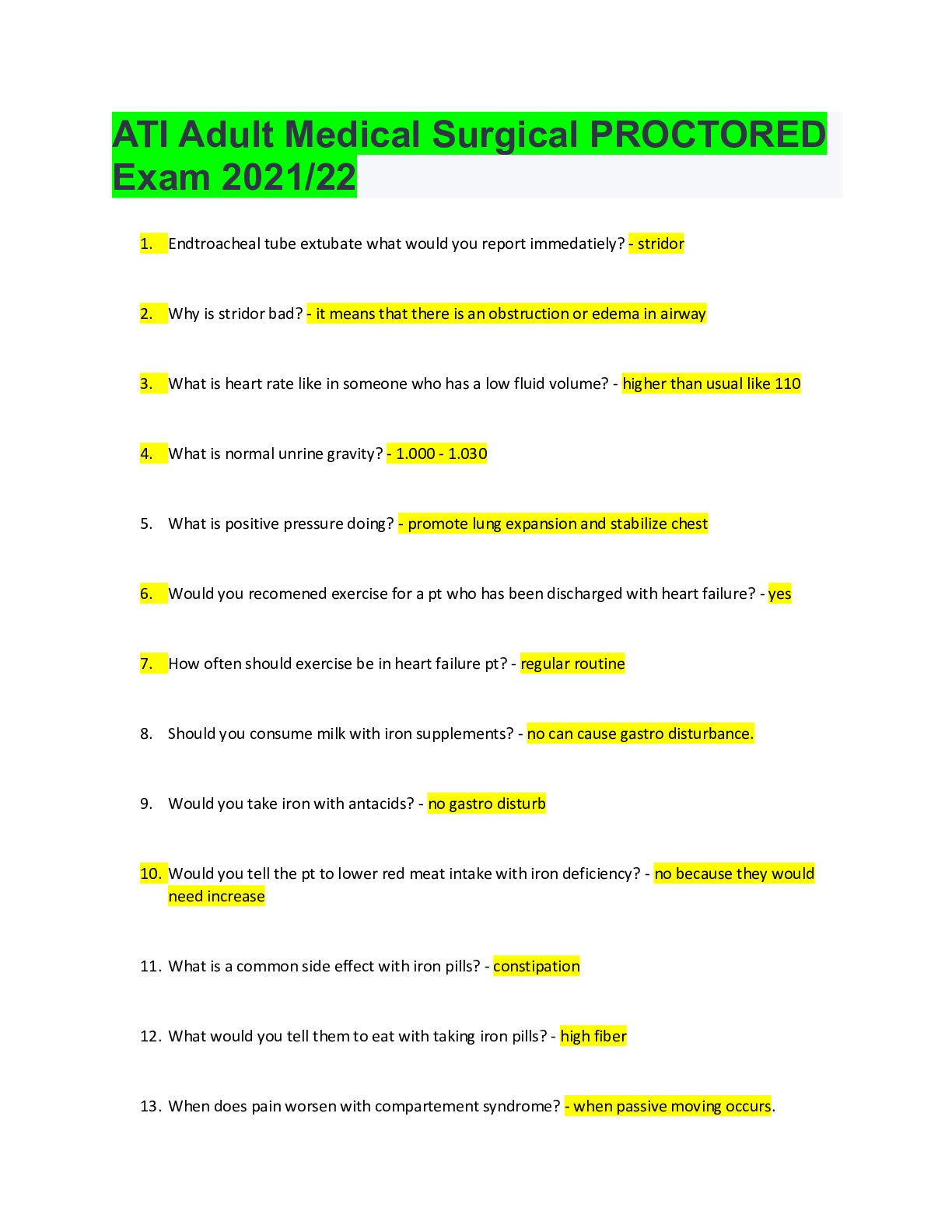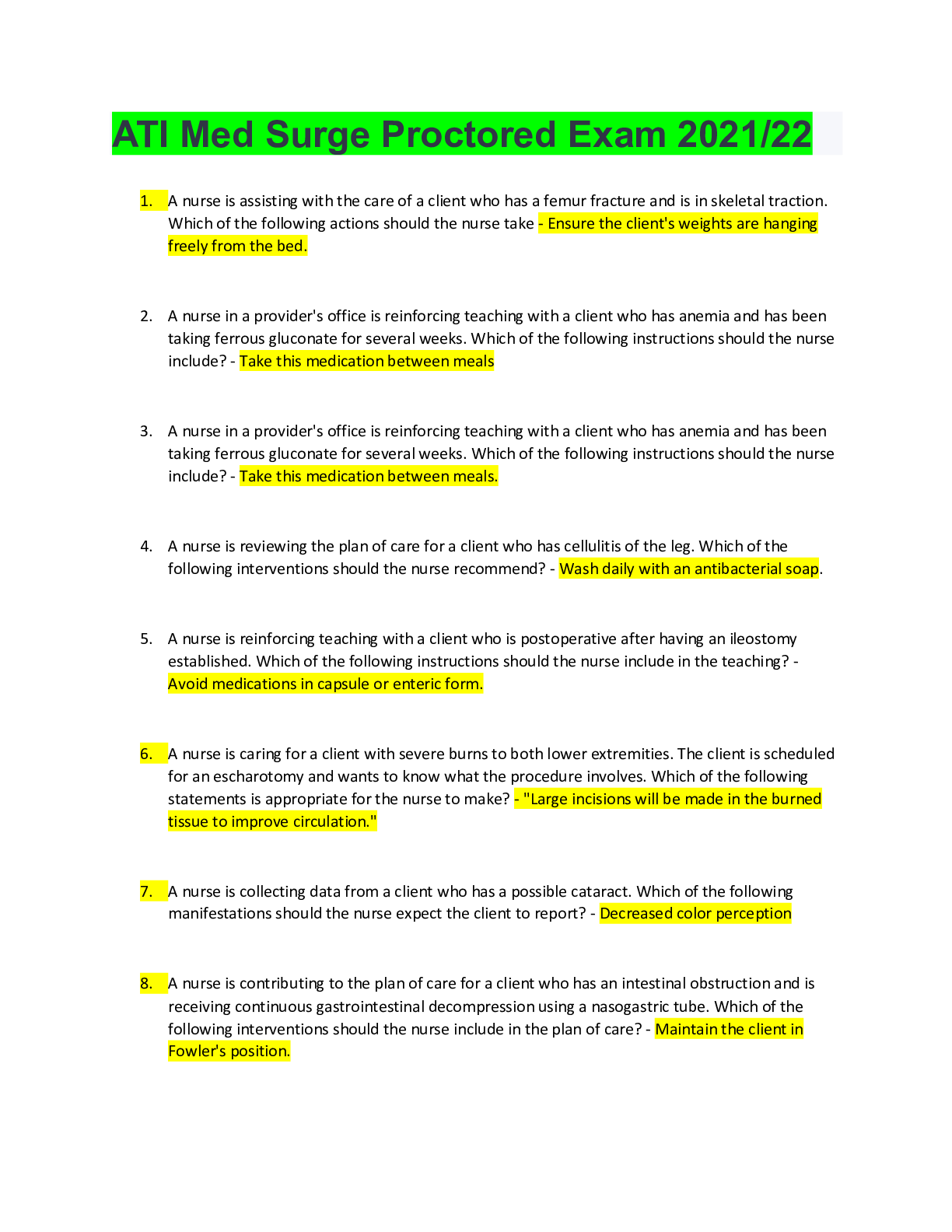*NURSING > MED-SURG EXAM > MED SURG 211 GIs Comprehensive Questions and Answers. Download your Grade A+ (All)
MED SURG 211 GIs Comprehensive Questions and Answers. Download your Grade A+
Document Content and Description Below
Ch. 38: all Ch. 41: all Ch. 42: p. 929-944, 950-964 Chapter 38: Assessment of Gastrointestinal System MULTIPLE CHOICE 1. Which information about an 80-yr-old male patient at the senior center i... s of most concern to the nurse? a. Decreased appetite c. Difficulty chewing food b. Unintended weight loss d. Complaints of indigestion ANS: B Unintentional weight loss is not a normal finding and may indicate a problem such as cancer or depression. Poor appetite, difficulty in chewing, and complaints of indigestion are common in older patients. These will need to be addressed but are not of as much concern as the weight loss. 2. An older patient reports chronic constipation. To promote bowel evacuation, the nurse will suggest that the patient attempt defecation a. in the mid-afternoon. b. after eating breakfast. c. right after getting up in the morning. d. immediately before the first daily meal. ANS: B The gastrocolic reflex is most active after the first daily meal. Arising in the morning, the anticipation of eating, and physical exercise do not stimulate these reflexes. 3. When caring for a patient with a history of a total gastrectomy, the nurse will monitor for a. constipation. b. dehydration. c. elevated total serum cholesterol. d. cobalamin (vitamin B12) deficiency. ANS: D The patient with a total gastrectomy does not secrete intrinsic factor, which is needed for cobalamin (vitamin B12) absorption. Because the stomach absorbs only small amounts of water and nutrients, the patient is not at higher risk for dehydration, elevated cholesterol, or constipation. 4. The nurse will plan to monitor a patient with an obstructed common bile duct for a. melena. b. steatorrhea. c. decreased serum cholesterol level. d. increased serum indirect bilirubin level. ANS: B A common bile duct obstruction will reduce the absorption of fat in the small intestine, leading to fatty stools. Gastrointestinal bleeding is not caused by common bile duct obstruction. Serum cholesterol levels are increased with biliary obstruction. Direct bilirubin level is increased with biliary obstruction. 5. The nurse receives the following information about a 51-yr-old female patient who is scheduled for a colonoscopy. Which information should be communicated to the health care provider before sending the patient for the procedure? a. The patient has a permanent pacemaker to prevent bradycardia. b. The patient is worried about discomfort during the examination. c. The patient has had an allergic reaction to both shellfish and iodine in the past. d. The patient declined to drink the prescribed polyethylene glycol (GoLYTELY). ANS: D If the patient has had inadequate bowel preparation, the colon cannot be visualized and the procedure should be rescheduled. Because contrast solution is not used during colonoscopy, the iodine allergy is not pertinent. A pacemaker is a contraindication to magnetic resonance imaging but not to colonoscopy. The nurse should instruct the patient about the sedation used during the examination to decrease the patient’s anxiety about discomfort. 6. Which statement to the nurse from a patient with jaundice indicates a need for teaching? a. “I used cough syrup several times a day last week.” b. “I take a baby aspirin every day to prevent strokes.” c. “I use acetaminophen (Tylenol) every 4 hours for back pain.” d. “I need to take an antacid for indigestion several times a week” ANS: C Chronic use of high doses of acetaminophen can be hepatotoxic and may have caused the patient’s jaundice. The other patient statements require further assessment by the nurse but do not indicate a need for patient education. 7. To palpate the liver during a head-to-toe physical assessment, the nurse a. places one hand on the patient’s back and presses upward and inward with the other hand below the patient’s right costal margin. b. places one hand on top of the other and uses the upper fingers to apply pressure and the bottom fingers to feel for the liver edge. c. presses slowly and firmly over the right costal margin with one hand and withdraws the fingers quickly after the liver edge is felt. d. places one hand under the patient’s lower ribs and presses the left lower rib cage forward, palpating below the costal margin with the other hand. ANS: A The liver is normally not palpable below the costal margin. The nurse needs to push inward below the right costal margin while lifting the patient’s back slightly with the left hand. The other methods will not allow palpation of the liver. 8. Which finding by the nurse during abdominal auscultation indicates a need for a focused abdominal assessment? a. Loud gurgles c. Absent bowel sounds b. High-pitched gurgles d. Frequent clicking sounds ANS: C Absent bowel sounds are abnormal and require further assessment by the nurse. The other sounds may be heard normally. 9. After assisting with a needle biopsy of the liver at a patient’s bedside, the nurse should a. put pressure on the biopsy site using a sandbag. b. elevate the head of the bed to facilitate breathing. c. place the patient on the right side with the bed flat. d. check the patient’s postbiopsy coagulation studies. ANS: C After a biopsy, the patient lies on the right side with the bed flat to splint the biopsy site. Coagulation studies are checked before the biopsy. A sandbag does not exert adequate pressure to splint the site. DIF: Cognitive Level: Apply (application) REF: 850 TOP: Nursing Process: Implementation MSC: NCLEX: Physiological Integrity 10. A 42-yr-old patient is admitted to the outpatient testing area for an ultrasound of the gallbladder. Which information obtained by the nurse indicates that the ultrasound may need to be rescheduled? a. The patient took a laxative the previous evening. b. The patient had a high-fat meal the previous evening. c. The patient has a permanent gastrostomy tube in place. d. The patient ate a low-fat bagel 4 hours ago for breakfast. ANS: D Food intake can cause the gallbladder to contract and result in a suboptimal study. The patient should be NPO for 8 to 12 hours before the test. A high-fat meal the previous evening, laxative use, or a gastrostomy tube will not affect the results of the study. [Show More]
Last updated: 1 year ago
Preview 1 out of 53 pages
Instant download

Instant download
Reviews( 0 )
Document information
Connected school, study & course
About the document
Uploaded On
Apr 28, 2021
Number of pages
53
Written in
Additional information
This document has been written for:
Uploaded
Apr 28, 2021
Downloads
0
Views
142

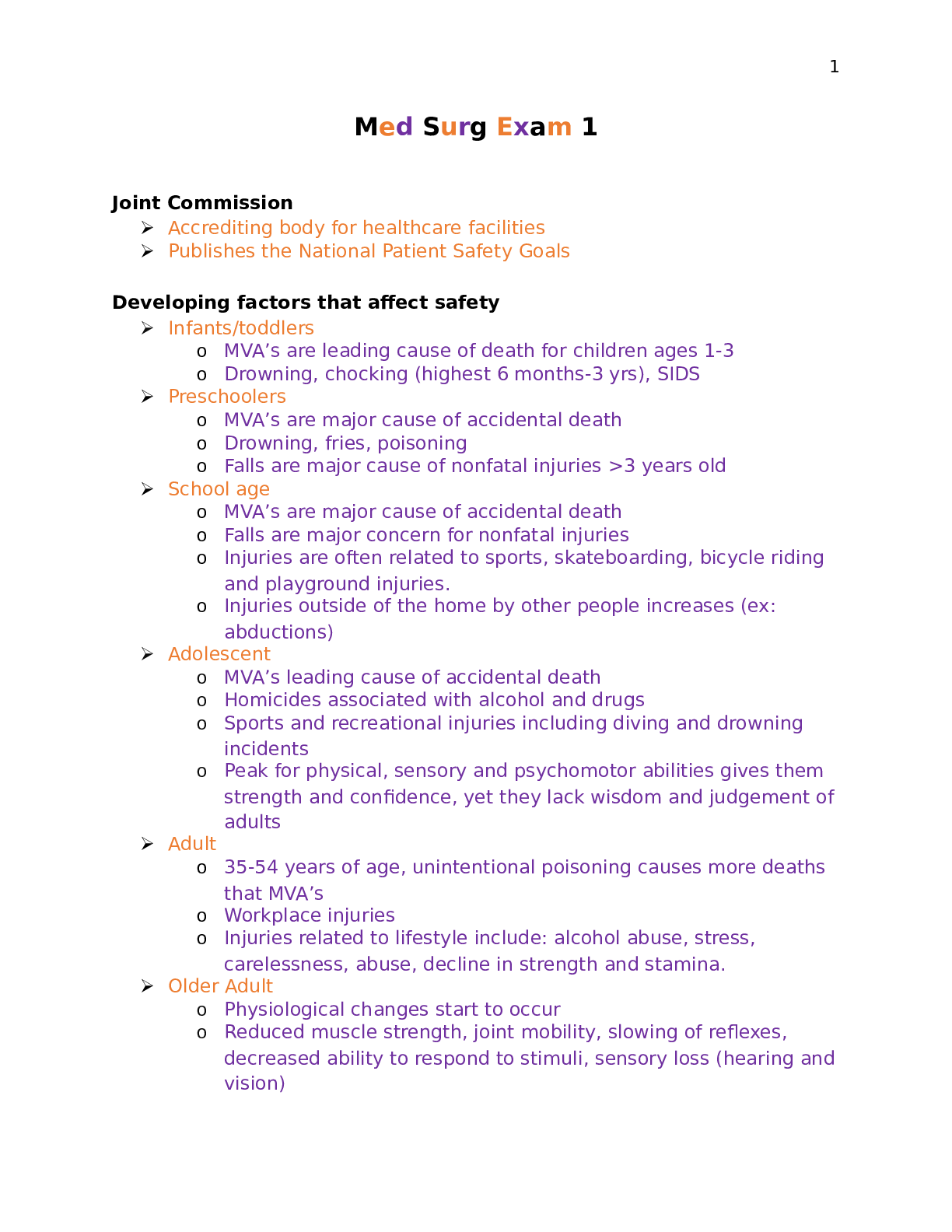


.png)
